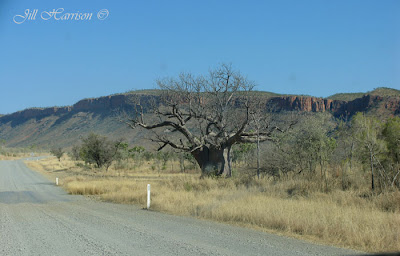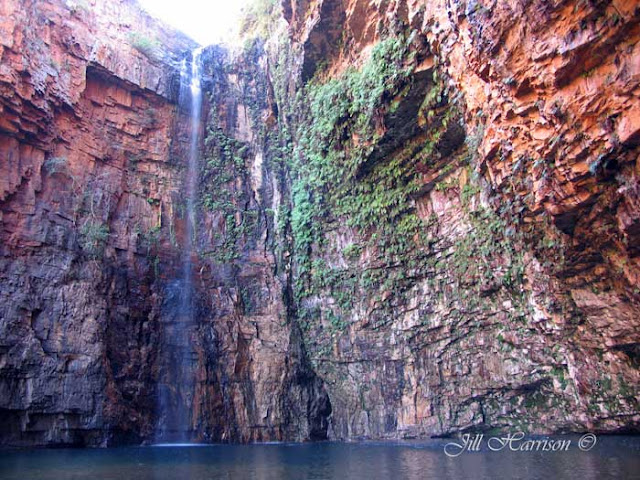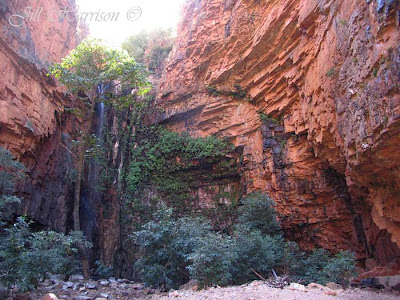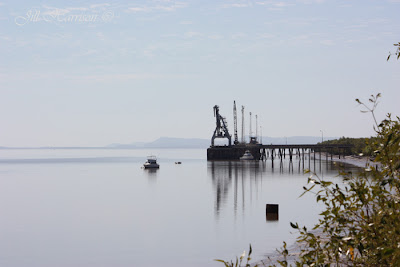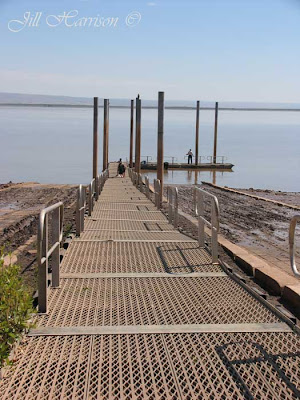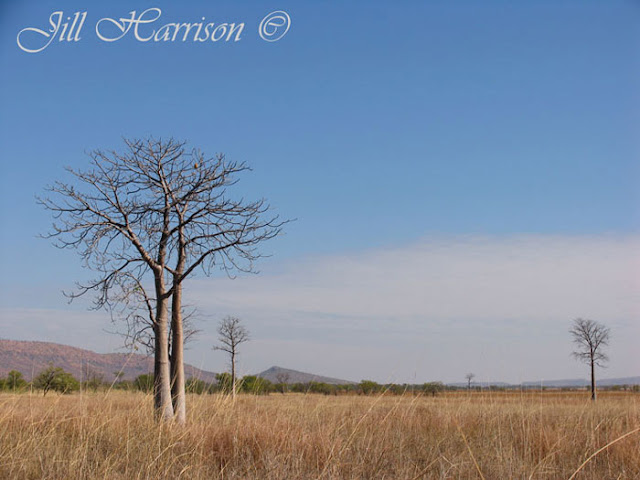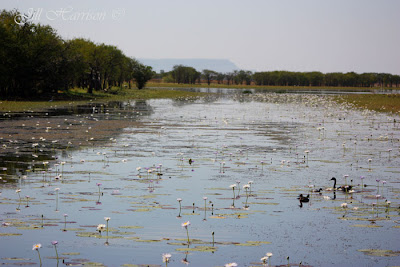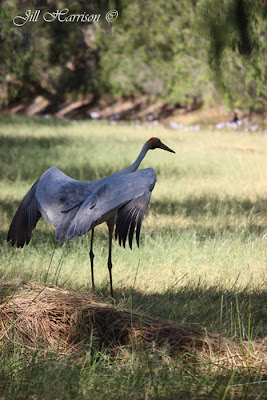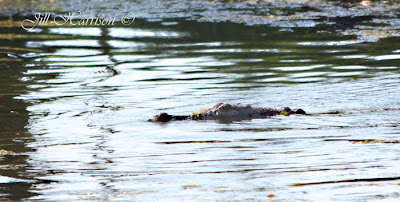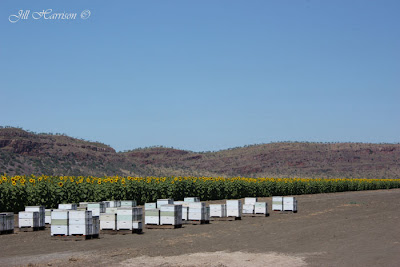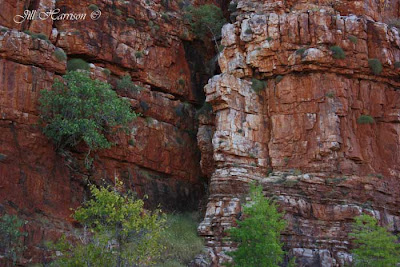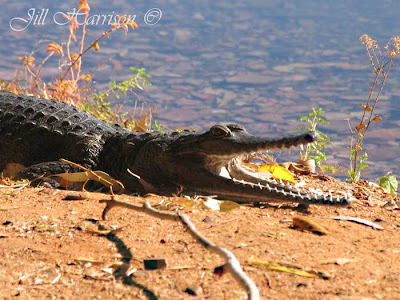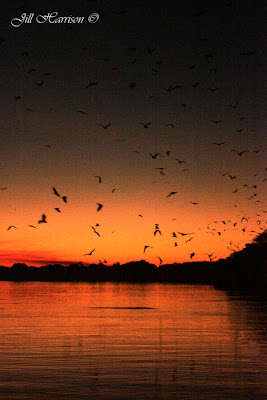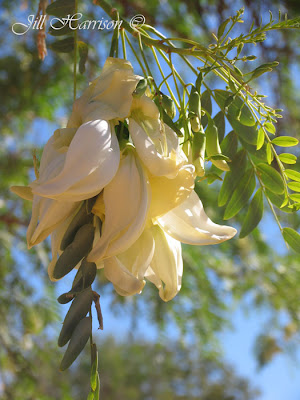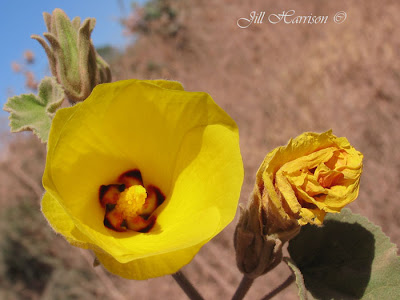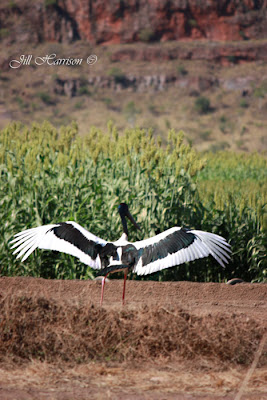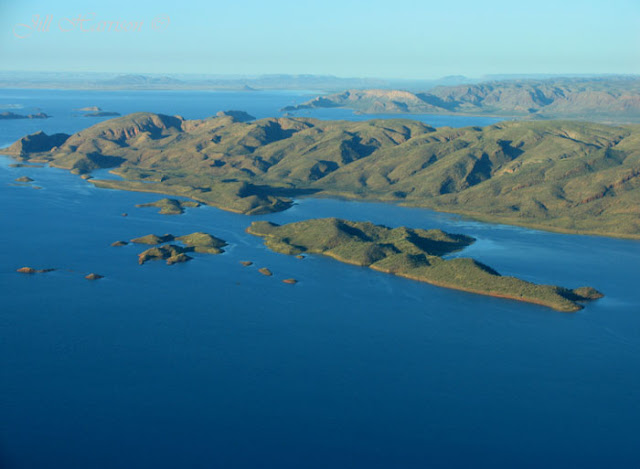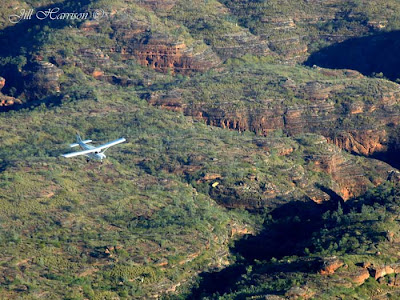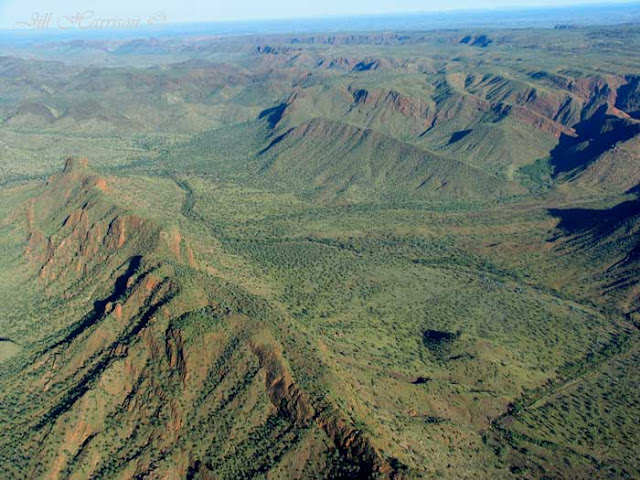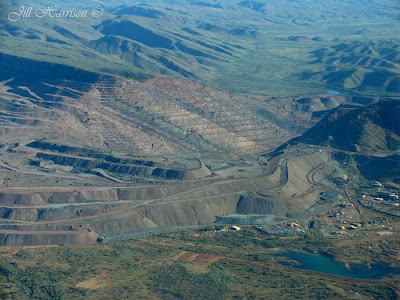This week we continue our trek along the Gibb River Road in the Kimberley of Western Australia's north west. It is time for us to move on from our swim at Emma Gorge....
Eleven kilometres from the Emma Gorge entrance is the turnoff to El Questro Wilderness Park. You can base yourself at Station Township bungalows, campgrounds, private riverside camp sites, or the luxurious El Questro Homestead. It is worth staying a few days to explore the various gorges within El Questro. There are guided tours or you can explore self drive. Boat hire, helicopter flights, and horse riding are just a few of the options. You can collect very detailed maps of the various walks from the Visitor Centre.
We were lucky to get a private riverside camp.....now they say there are crocodiles in this river, but we didn't see any. See the little pool lined with rocks in the foreground, that has been provided so you can "safety" take a dip....we used it everyday - it was great for a cool off.
 |
| From Western Australia |
One of the most popular walks is through El Questro Gorge. The trail passes along a deep narrow gorge featuring crystal clear pools and lush vegetation under a rainforest canopy. It is surprising to see such a profusion of ferns and palms – seemingly out of place from the harsh environment beyond the gorge. There is a short and a long walk. The short walk takes you to halfway pool (2.6km return - allow 2 hours) where you can enjoy a cooling swim. From this point the trail classification turns to difficult and challenging and should only be attempted by physically fit and capable walkers. The full walk through El Questro Gorge to Mac Micking Pool is 6.8km return (allow 5 hours plus swimming time).
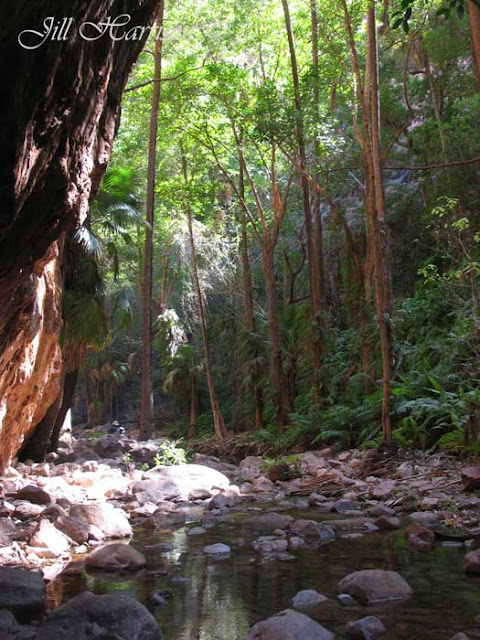 |
| From Western Australia |
At Chamberlain Gorge you can join a boat tour or hire a boat for a leisurely afternoon floating up the gorge or having a fish. We decided to hire a boat and spent a lovely afternoon on the water. Far up in the Gorge you might even see Aboriginal paintings on the high walls of the Gorge....
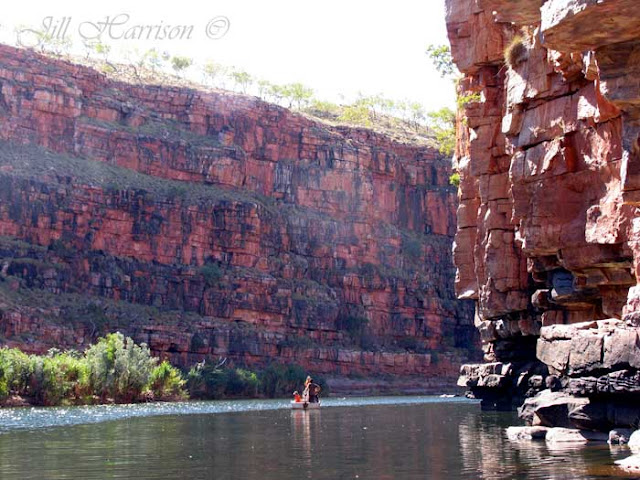 |
| From Western Australia |
Another popular place is Zebedee Springs; a permanent thermal spring shaded by Livistona Palms. The water temperature is 28 to 32C all year, perfect for a relaxing soak. The best idea is to get here early in the morning with you want a section of the pool to yourself. It is closed to the "general public" after lunch - in the afternoons people staying at the "luxury" homestead come for a soak.
 |
| From Western Australia |
Another view of Chamberlain Gorge during from our hired "tinny" boat. The boats come with electric motors, so it is very quiet. My son even caught a couple of little fish! It was so wonderful puttering along through the gorge.
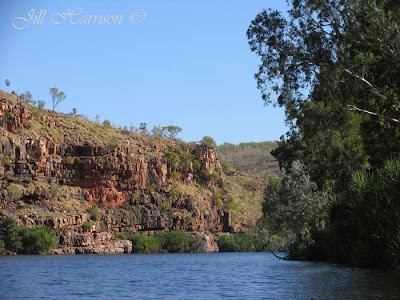 |
| From Western Australia |
I am constantly amazed how trees can grow on a rock ledge. Their roots go down through the cracks looking for nutrients. This one is in Chamberlain Gorge.
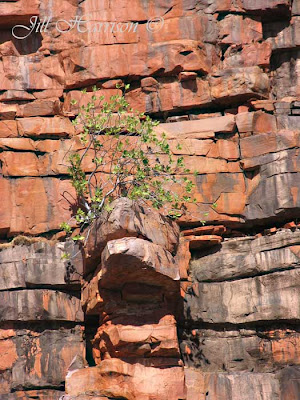 |
| From Western Australia |
The view from Brancos Lookout at El Questro.
 |
| From Western Australia |
This is one of the roads within the park - or rather a road following a creek bed. The bottom was all rocky - 4WD only! Thank goodness not all the roads were like this. THe photo is a bit wonky because we were driving at the time, and it was difficult to stay straight!
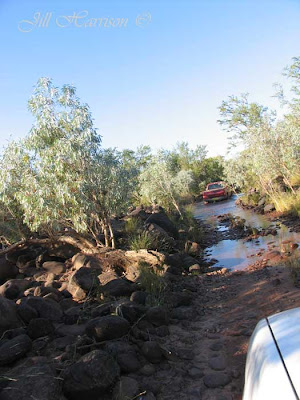 |
| From Western Australia |

